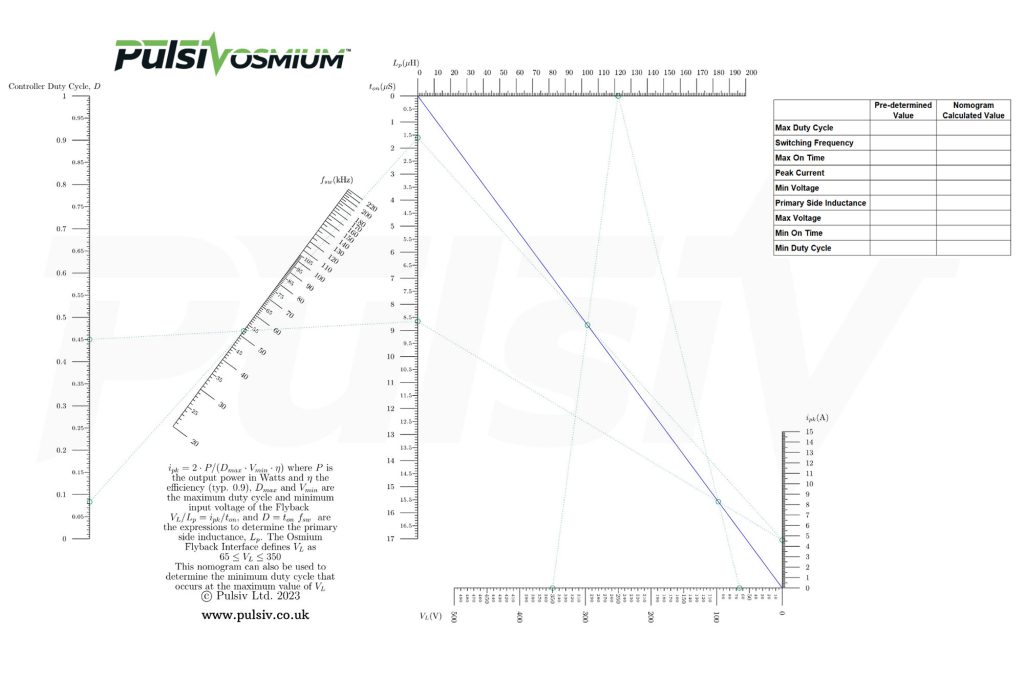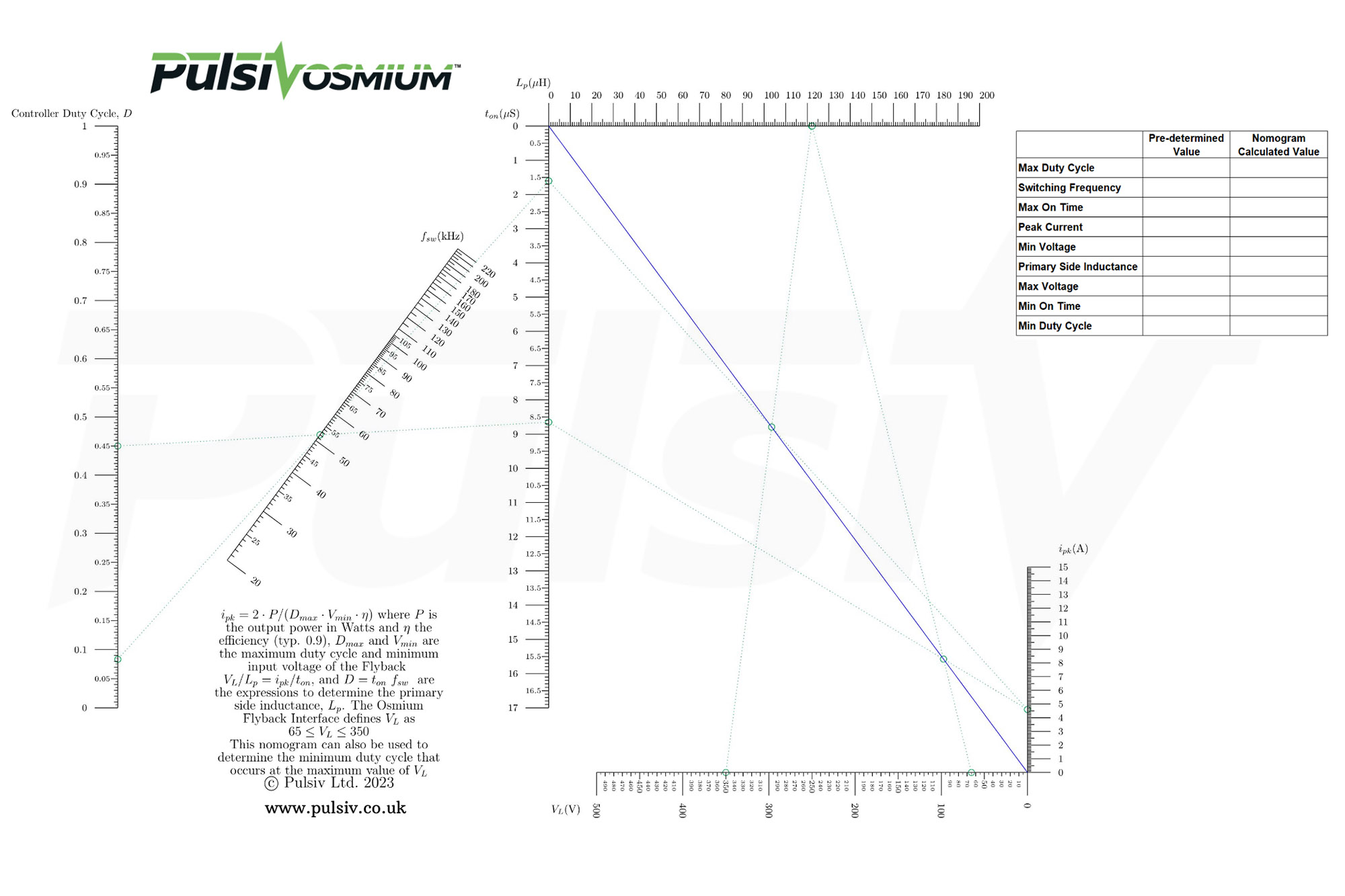Pulsiv Limited, the Cambridge (UK) innovator of power electronics technology, has developed an innovative nomogram to help design engineers to rapidly determine critical transformer parameters in DCM flyback designs. This intuitive tool can replace more complex equation-based methods, providing a fast and accurate visual process for identifying primary side inductance and minimum duty cycle. Combining DCM flyback designs with a Pulsiv OSMIUM AC to DC front-end maximises overall conversion efficiency, reduces energy waste, and lowers cost across a range of power electronics applications including USB-C devices, LED drivers, and battery chargers.
About nomograms
The field of nomography was invented in 1884 by French engineer and mathematician, Philbert Maurice d’Ocagne to provide engineers with a precise and practical method for calculating complicated formulas using a parallel coordinate system. Results from a nomogram are obtained quickly and reliably by simply drawing one or more lines, without needing to solve algebraic equations.
Using the Pulsiv nomogram
- Step 1: Switching frequency & maximum duty cycle
Note the switching frequency and maximum duty cycle of your chosen flyback controller.
- Step 2: Peak current & minimum operating voltage
Select the required peak current (based on the output power) and minimum flyback operating voltage.
- Step 3: Primary side inductance & minimum duty cycle
Draw straight lines across the nomogram to identify suitable values for primary side inductance (for the DCM flyback) and minimum duty cycle (based on the maximum flyback operating voltage).
- Step 4: Check the flyback controller datasheet
It is important to check the flyback controller datasheet to ensure that the meet the minimum duty cycle, calculated from Step 3, can be achieved. Some controllers change the switching frequency based on the operating voltage of the flyback, and this must be considered when using the nomogram to determine the minimum duty cycle.

Maximise efficiency to reduce energy waste
DCM flybacks are a popular choice in low to medium power designs where isolation is required. They are often paired with a boost PFC front-end stage with significant switching losses under low load conditions and poor average efficiency.
By comparison, Pulsiv OSMIUM technology uses a patented switching technique by applying intelligence to an active valley fill approach for converting AC to DC. This unique method offers several advantages:
- A front-end efficiency of 97.5% (99.5% peak) and 90% at 2W
- A totally flat efficiency profile across the entire load range
- Input voltage derating is eliminated
- Inrush current is eliminated
- Extending the range of single-switch flybacks to 180W
- Meeting the latest ecodesign regulations
Pulsiv OSMIUM technology can improve the efficiency of flyback converters by reducing the peak operating voltage. As a result:
- Primary side inductance is reduced
- Leakage inductance is lowered
- Total winding area is increased
This enables engineers to select a smaller transformer core size, while reducing overall weight and cost.

